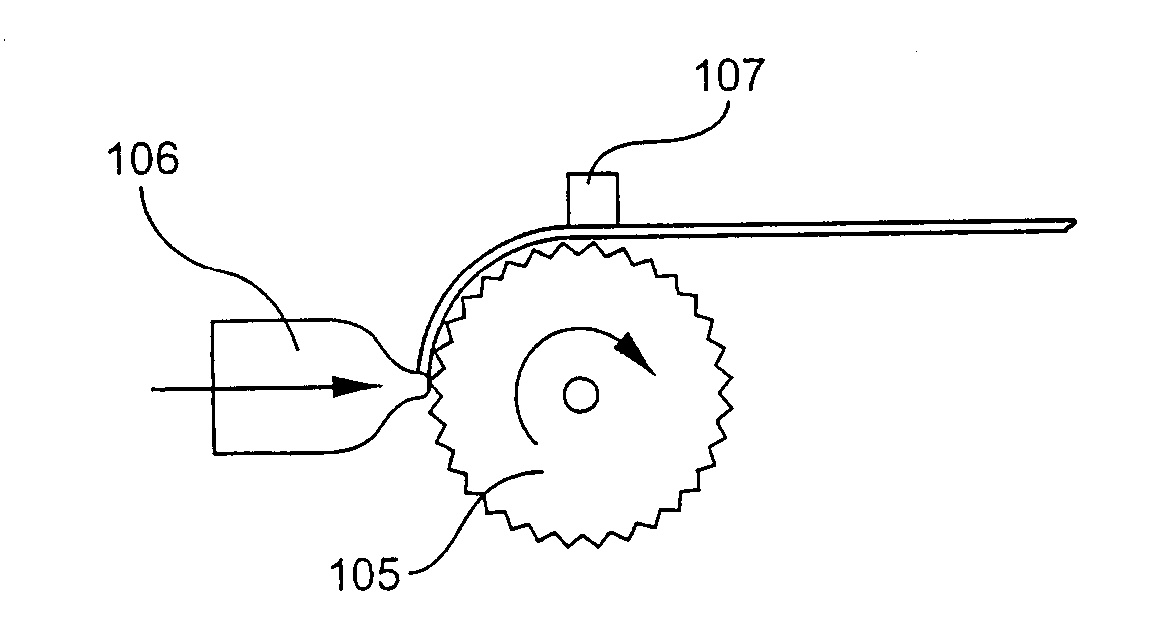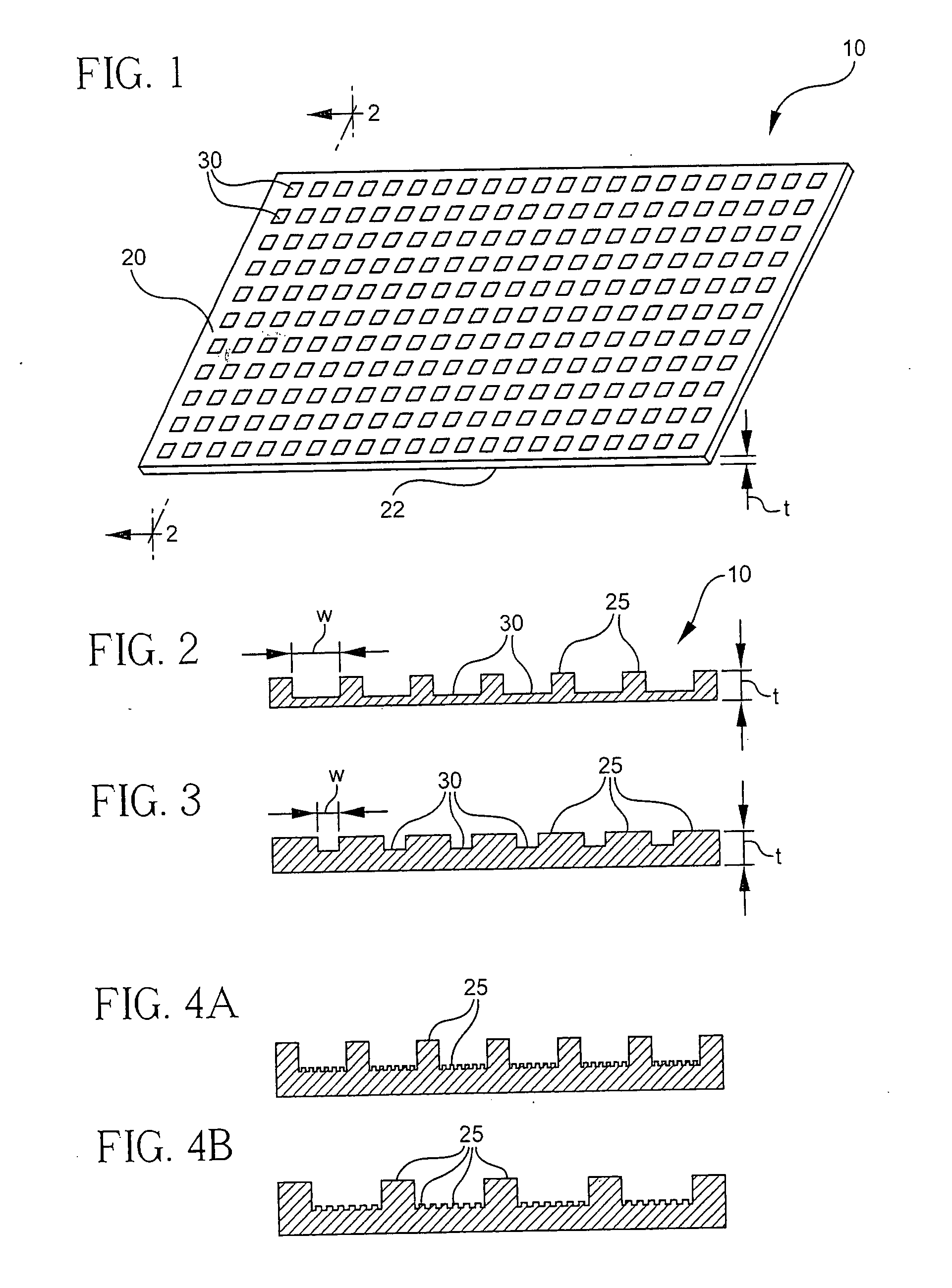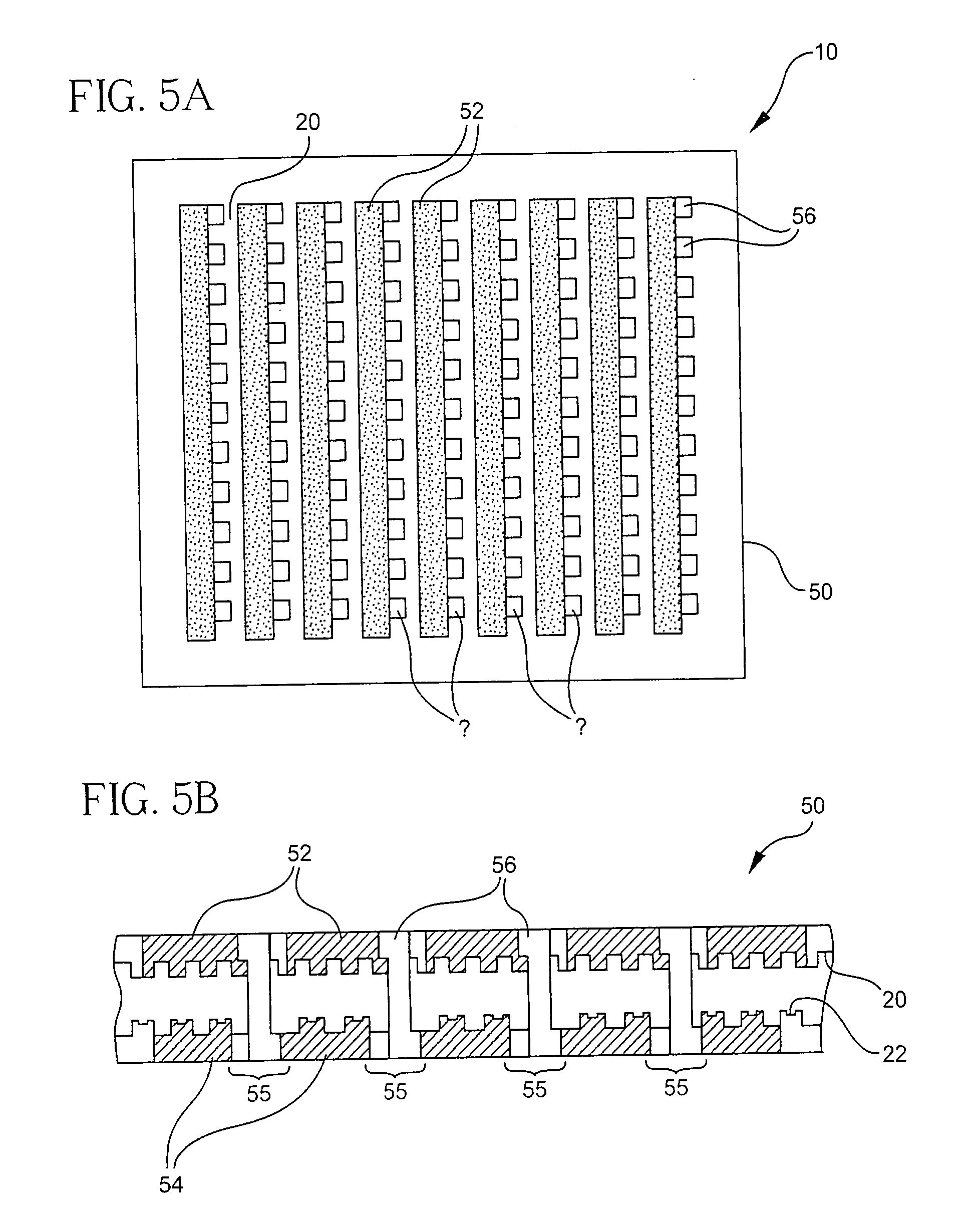Fuel cell device with a textured electrolyte sheet and a method of making such sheet
- Summary
- Abstract
- Description
- Claims
- Application Information
AI Technical Summary
Benefits of technology
Problems solved by technology
Method used
Image
Examples
example 1
[0098]FIG. 11A illustrates one example of the electrolyte sheet of the present invention. FIG. 11B illustrates the cross-sectional view of the electrolyte sheet of FIG. 11A. The electrolyte sheet 10 of this example has two textured surfaces 20, 22. This electrolyte sheet was made as follows: [0099] i. In a filtered air “clean” environment, Teflon® coated cloth (150 micron-Ultra Premium Grade PTFE coated fiberglass fabric, available from CS Hyde Co., Lake Villa Ill., USA) is smoothed out on a glass plate and then attached to the glass plate with tape. The Teflon® coated cloth has an existing micro texture (weave). [0100] ii. A slip of zirconia-3 mole % yttria powder is coated on the Teflon® coated cloth using a tape casting “doctor” blade with a 50 micron gap and a 15 cm width, forming a green sheet. [0101] iii. The micro-textured green sheet (i.e. the green sheet with the size of features 25 between 0.5 and 50 microns) was dried for ½ hour at room temperature under a plastic cover t...
example 2
[0108] Applicants also discovered that it is desirable to modulate the electrolyte thickness in a patterned fashion in order to improve its net mechanical properties. First consider the case of an electrolyte of uniform thickness. If the space between electrode strips (i.e., via galleries 55) has less printed material (to accommodate vias and / or via pads) the via gallery will be comparatively less “stiff” then the electrode regions. On flexure of the device, the via gallery regions will be subject to stress concentration because they are relatively more flexible than the electrode regions and will have a relatively short radius of curvature. In this case, because we wish to avoid concentrating stress in the regions between the electrodes which contain the vias (i.e., through holes), a more uniform flexure is desired throughout the electrolyte sheet. Therefore, it will be advantageous to provide more thickness in the via gallery regions, which will provide more uniform flexure of the...
example 3
[0110]FIG. 14 illustrates another example of the electrolyte sheet 10 with a textured surface 20. Surface 20 includes a plurality of linear indentations or grooves. These features are 3 micrometers wide and 3 micrometers deep and separated by 3 micrometers. The non-grooved portions of the electrolyte sheet 10 are 15 micrometers thick. The grooves reduce the average electrolyte thickness by 1.5 micrometers (10%) and increase the surface area by a factor of 2 (100%) in the textured region.
[0111] A similar plurality of grooves with 1 micron separations, vertical walls, 1 micrometer wide and 6 micrometers deep will have an aspect ratio of 6:1 and thus reduce the average electrolyte sheet thickness by 3.5 micrometers (20%) while increasing the surface area by a factor of seven.
[0112] As another variation of this example, an array of grooves 3 micrometers wide and 5 micrometers deep with wall angles of 70 degrees reduces the thickness of the electrolyte sheet by 2.5 micrometer (about 17...
PUM
| Property | Measurement | Unit |
|---|---|---|
| Temperature | aaaaa | aaaaa |
| Length | aaaaa | aaaaa |
| Length | aaaaa | aaaaa |
Abstract
Description
Claims
Application Information
 Login to View More
Login to View More - R&D
- Intellectual Property
- Life Sciences
- Materials
- Tech Scout
- Unparalleled Data Quality
- Higher Quality Content
- 60% Fewer Hallucinations
Browse by: Latest US Patents, China's latest patents, Technical Efficacy Thesaurus, Application Domain, Technology Topic, Popular Technical Reports.
© 2025 PatSnap. All rights reserved.Legal|Privacy policy|Modern Slavery Act Transparency Statement|Sitemap|About US| Contact US: help@patsnap.com



